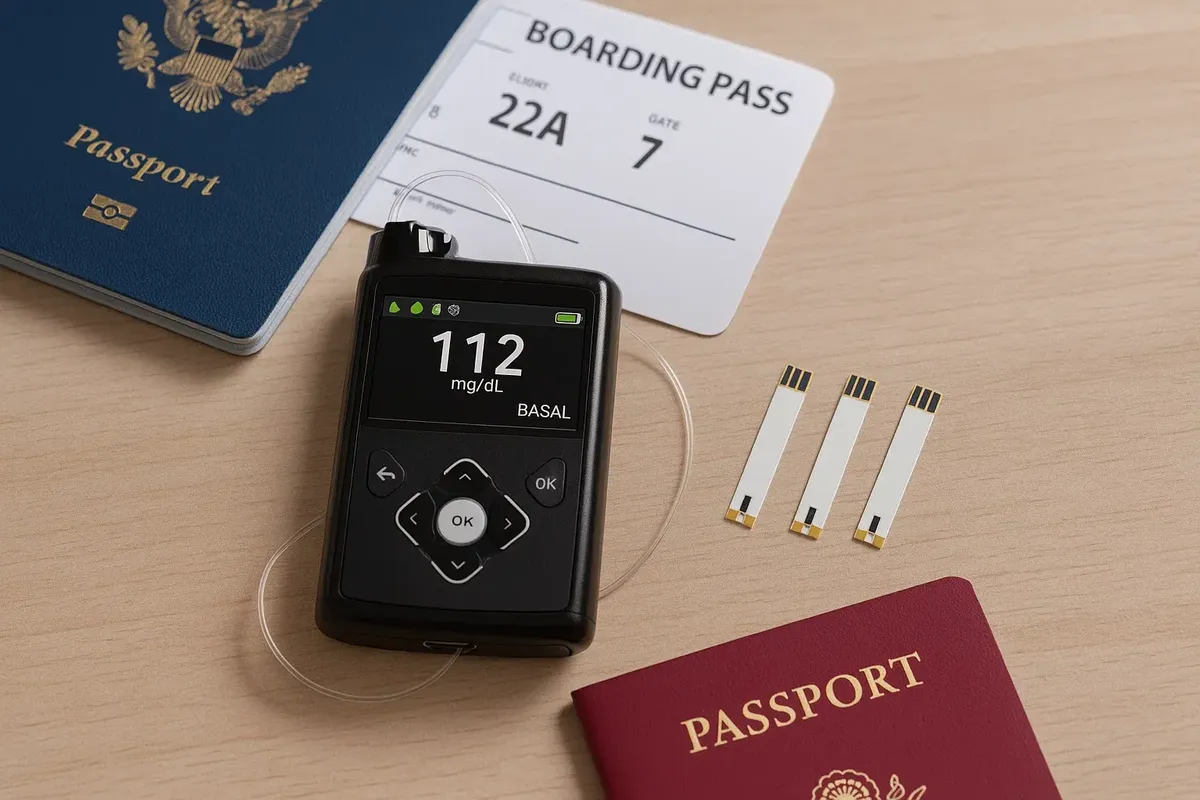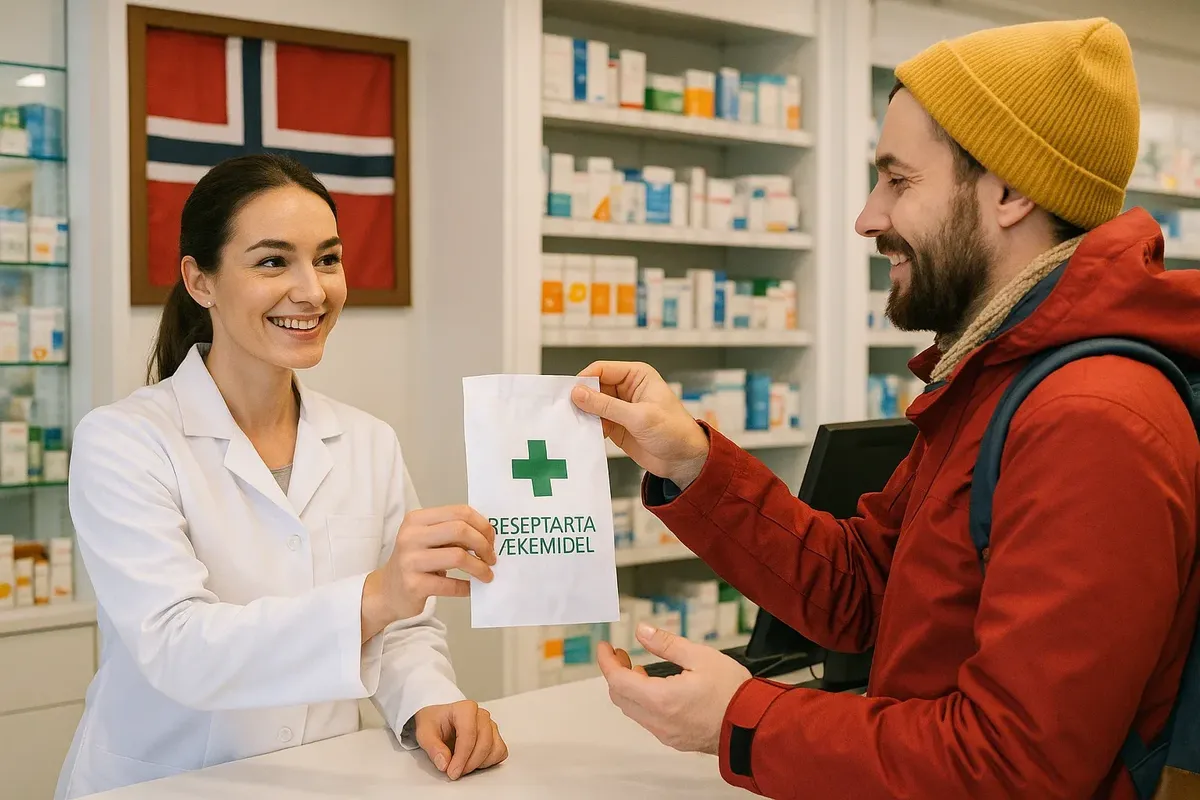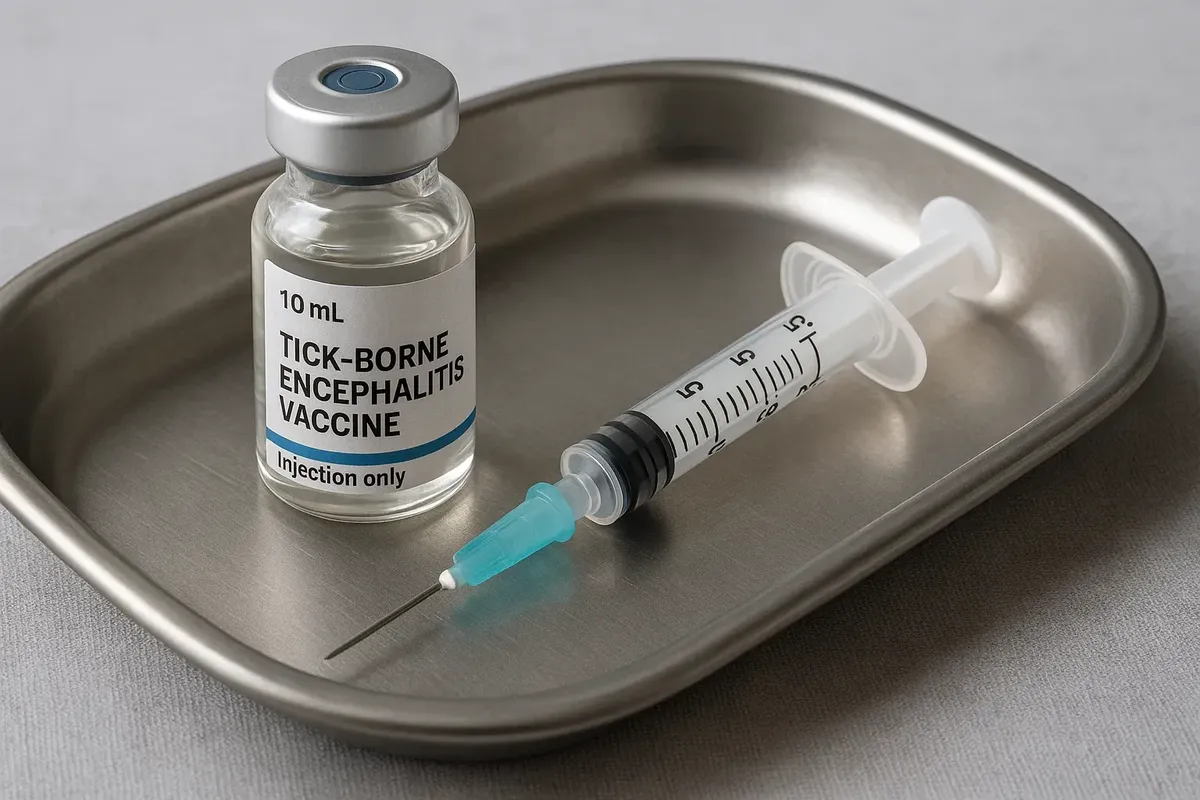💊 Chronic illnesses, medications, and prevention in Norway: how to travel safely? 🛡️
If you're thinking of travelling to Norway, it's always a good idea to prepare well, especially if you have any chronic health conditions. We totally get it, importing medication, insulin pumps, oxygen equipment, vaccines and preventive screening can be a bit confusing for tourists. In this article, we'll go through everything you need to know about entry rules, buying medications, insurance, compensation and prevention so that you can have a comfortable and safe trip.
I was wondering if I could bring an insulin pump, and if so, how many test strips customs would allow?

Absolutely, you can bring your insulin pump and up to three months' worth of supplies with you to Norway. Just make sure you've got a medical certificate from an endocrinologist in English or Norwegian, and you're all set! Hey, just a heads-up: it's best to use the IDF template for the certificate. This will let you include the quantity and brand of consumables, and add a friendly note that says 'for personal use'. Lancets and test strips are considered medical devices and are imported duty-free up to a total value of NOK 7,500. When you get to customs, please go through the red channel and present your certificate. The whole thing only takes a few minutes, and you won't have to pay any fines for declaring these items.
I was wondering if you could help me? I'm a tourist with hypertension and I'd like to know how I can get a repeat prescription in Norway?
If you're a tourist and you need a prescription for medication to treat high blood pressure, you can either pop into the Legevakt department or book an online consultation via the KRY platform. Please remember to take the original packaging and a translated prescription with you. Don't worry, though, the doctor will sort things out and give you an e-prescription, which you'll be able to use at any pharmacy in Norway. We totally understand that money is always a concern, so we're really happy to tell you that an in-person consultation costs approximately 1235 NOK, while online consultations cost about 695 NOK. The great news is that both of these options are covered by standard insurance at 100%. Please note that dosages in Norway may differ from what you are used to (for example, amlodipine is only available in 5 and 10 mg), so it's a good idea to take a photo of your medical history in advance and show it to your doctor.

I totally understand if you're wondering whether tourists need to pay extra for the tick-borne encephalitis vaccine.
I'm sorry to say that the FSME-IMMUN vaccine for tick-borne encephalitis isn't included in Norway's national vaccination schedule. This means that tourists like you will need to pay for it in full. The vaccine costs approximately NOK 480 per dose, plus NOK 250 for administration at a medical clinic. Hey, just so you know, if your insurance policy includes preventive medicine, you might be able to get all your costs covered. You'll be pleased to know that this option is usually available in Adventure Pack policies. Hey, just so you know, you can get the vaccination at Boots pharmacies if you book an appointment two days in advance. It's important to be aware that tick-borne encephalitis is common in the Rogaland and Aust-Agder regions.

I'd love to know how much prescription medication I can bring in under the 2025 rules, if that's ok?
I'm very pleased to tell you that, from 2025, you'll be able to bring a 90-day supply of prescription medication into Norway for personal use. Don't worry, for psychotropic drugs the limit is 30 days. All you need to do to get your prescription is make sure you have a medical prescription with the Latin name of the drug, a translation into English or Norwegian, and your passport. Don't worry - if customs ask you to open the package and check its contents, they will probably be really nice and understanding. If the drug is on lists A or B (e.g. opioids or stimulants), you will need to fill out Form N-803. We all have to follow the rules, and if you don't, there might be a small fine of up to NOK 8,500. Don't worry, though, because insurance doesn't usually cover medication, but sometimes they'll give you some money back for fines caused by mistakes.
I'm just wondering whether the policy would cover the rental of a wheelchair or oxygen concentrator?
Absolutely! If your insurance policy includes the 'Mobility & Oxygen' extension, you might be able to get some help towards the cost of renting medical equipment like wheelchairs, electric scooters, or portable oxygen concentrators. We're happy to help you out with up to €1,000. To make things easier for everyone, could you please send a medical report and a preliminary invoice from the rental company (e.g. Funksjonell Hjelpemidler) to the insurance company 72 hours before arrival? Without insurance, renting a wheelchair costs an average of NOK 150 per day, and an oxygen concentrator costs around NOK 400 per day. If the airline loses the equipment, the insurance company will pay the market value.
Does the government give money to help pay for contact lenses for children from other countries?
You can only get help from the government through Helfo if you have a confirmed diagnosis of aniridia, keratoconus or refraction ≥ -8 D. Tourists, including children, pay for lenses themselves. This costs approximately NOK 2,000–3,500 per year. Some junior cover insurance policies let you claim up to €150 for lenses with a prescription and receipt from an optician. If you buy lenses online (e.g. through Lensit), delivery to Post i Butikk collection points takes only 3–4 days, and you don't need any extra documents.
What does travel insurance cover when it comes to check-ups and screening?
Usually, standard travel insurance policies do not cover medical check-ups to make sure you are healthy. This is because these are considered optional, rather than an emergency. There is one exception: if you have a VIP Annual policy, you can get an annual check-up (a 'wellness check') for up to €250. In Norway, a basic check-up (blood pressure, blood test, ECG) costs approximately 1,900 NOK. If you are in a risk group (over 40, smoke or have diabetes), it is better to add this option to your insurance policy in advance so that you do not have to pay the full cost of the examination.
What should I do if I run out of medication and there is no replacement in Norway?
If you run out of medication in Norway and there are no local equivalents, contact the International Pharmacy Service of the Apotek 1 pharmacy chain. They will find the same medication by its international non-proprietary name and order it from countries nearby (usually Sweden or Denmark). It takes 24–48 hours to arrive and costs around NOK 150. The insurance will cover the costs if the terms and conditions include 'emergency replenishment' and the medication was prescribed by a doctor before the trip. In some cases, the doctor might suggest a similar medicine with the same ingredients and the same dose.
Will insurance cover the cost of a fridge for storing medicines?
If your insurance policy includes coverage for 'temperature-sensitive goods', you can claim back the cost of purchasing or renting a cooler to transport biological preparations. For example, a portable 12V car cooler that keeps the temperature at +2 °C costs about 1,100 NOK. If you lose or damage something, the insurance will pay you back up to 100%. Before you leave, check the airline's transportation rules. Norwegian and SAS allow you to take ice packs weighing up to 2 kg without paying more. Keep hold of all the receipts and photos of the device you have – the insurance company will definitely ask to see them.
What do you need to do to get a tax refund for buying medical orthoses?
When you buy medical orthoses in Norway, you can get back VAT (up to 19%) through the Global Blue system if the purchase amount is more than NOK 315. When you buy it, ask for a Tax-Free form marked 'medical equipment'. When you leave the country, you need to show the goods, your passport and the form to customs. You will get a stamp and then you can send the documents via Global Blue. You can get your refund on your card or in cash, minus a 35 NOK commission. Insurance usually does not cover orthotics, but it may refund the VAT paid if you have the 'Rehab Plus' option.
You can travel to Norway with a chronic illness. It is possible and comfortable, but you must know the rules and prepare in advance. Now you can relax and enjoy the nature and beauty of the country, safe in the knowledge that any health issues will be resolved quickly and easily. Plan your trip in advance and make sure you have the best holiday ever in amazing Norway!





1 comment
Log in to leave a comment
Har dere noen erfaring eller råd om hvordan man best organiserer seg med resept og helseforsikring for medisiner under oppholdet i Norge?